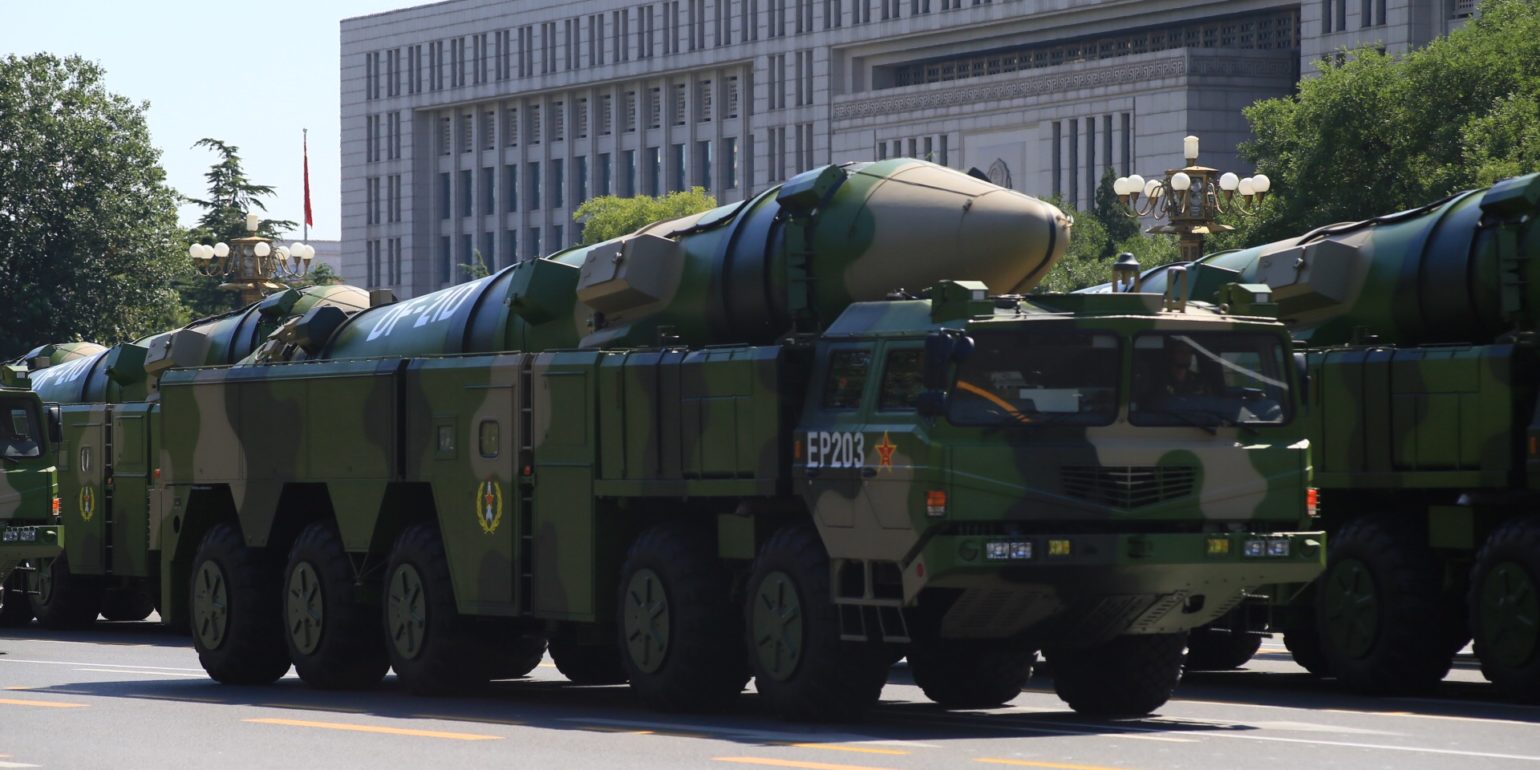Facts
| China/U.S. Designation | DF-21D/CSS-5/ASBM |
| Missile Variants | DF-21A/DF-21B/DF-21C |
| Mobility and Role | Road mobile/Medium Range Ballistic Missile |
| Designer/Producer | People’s Republic of China |
| Range | 2,000km |
| Warhead Type and Weight | Conventional or Nuclear/600kg |
| MIRV and Yield | No MIRV capability/200-300kt |
| Guidance System/Accuracy | Inertial/terminal radar/20m CEP |
| Stages/Propellant | Multistage/Solid |
| IOC/Retirement | 2012/Still in service |
| Status/Number of Units | Operational/80 missiles;80 launchers “est” |
Overview
The Dong Feng 21D, or DF-21D, is a medium ranged, road mobile, ballistic missile developed by the People’s Republic of China. A variant of the DF-21A, the DF-21D was deemed operational in 2012 and is the world’s first anti-ship ballistic missile (ASBM) intended to attack ships at sea.[i] Reaching speeds up to Mach 10 during the terminal phase, the DF-21D is the fastest MRBM to date and can surpass existing U.S. missile defense systems such as the sea-based AEGIS ballistic missile defense (BMD) system.[ii] In 2013, the DF-21D was tested against targets equivalent to U.S. surface ships which proved to be successful.[iii] By using both inertial and radar guidance systems, the ASBM increases speed upon reentering Earth’s atmosphere to avoid missile defense structures and ensure a direct hit on moving sea-based targets.[iv] A variant of the DF-21D is currently in production with intentions of increasing its range and payload.
Strategic Implications
Until the United States deploys adequate capabilities to defend against the DF-21D, U.S. aircraft carrier strike groups operating within the missile’s range will remain vulnerable.[v] With that in mind, the DF-21D is critical to China’s anti-access/area denial (A2/AD) strategy in the Asia-Pacific region, which aims to limit U.S. freedom of movement by exploiting U.S. operational vulnerabilities. Using long-range precision-guided ballistic missiles such as the DF-21D, China puts all U.S. forces operating in the Asia-Pacific at risk, undercutting U.S. power projection in the region.[vi] In addition, the long-range standoff capability of the DF-21D grants China more operation flexibility in the field while minimizing the chance of a surprise attack.[vii] Consequently, this provides China with a significant operational advantage in the region.[viii]
Sources
[i] https://missilethreat.csis.org/missile/df-21/
[ii] http://thediplomat.com/2013/10/lifting-the-veil-on-chinas-carrier-killer/
[iii] http://nationalinterest.org/blog/the-buzz/chinas-carrier-killer-really-threat-the-us-navy-13765
[iv] http://www.iiss.org/en/publications/adelphi/by%20year/2014-de9e/paper-tigers–china-s-nuclear-posture-371a/ap446-06-chapter-4-792d
[v] https://cpianalysis.org/2013/09/29/no-game-changer-but-a-great-complicator-chinas-df-21d-asbm/
[vi] http://www.globalsecurity.org/wmd/world/china/df-21d.htm
[vii] http://www.military-today.com/missiles/df_21d.htm
[viii] http://nationalinterest.org/blog/the-buzz/chinas-df-26-anti-ship-ballistic-missile-what-does-the-16260

